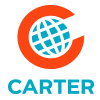We often hear, “We need new donors; we can’t keep going back to the same well.” As fundraising professionals, we know this is simply not true. Most of your prospects for major gifts are donors who have already given to your organization. However, raising more money from the same pool of donors requires properly stewarding those relationships over time.
So, how do you make sure you are properly stewarding your donors?
At the core of every successful fundraising program is a well-thought-out donor stewardship plan – a detailed outline of an organization’s processes and strategies for keeping a donor engaged, illustrating gift impact and building long-lasting relationships.
Whether you are looking to create a plan from scratch or check your current plan against best practices, in this blog post, I’ll cover four of the donor stewardship plan essentials.
SEGMENT YOUR DONORS
I recommend segmenting your donors by gift size, frequency and personalization preferences, starting with the basic pyramid below:For donors in the top three levels – Bequests, Major Donors and Recurring Donors – you should create different categories for those who are donating at different frequencies (i.e., once a year vs. three times per year). This can help ensure your thank-you messages do not feel canned or become stale. For example, you may write a thank you note to a donor who has given once in a year and follow up with the impact of their gift. For a donor that has given twice in one year, you may send a note and share the impact upon receiving the first gift and then invite them to see the impact of their gift first-hand upon receiving the second gift.
Donors in the first two levels of the pyramid – Bequests and Major Gifts – often already have personal relationships with senior staff or board members, as these gifts are usually the result of personal relationships that have been cultivated over longer periods of time. For these donors, your team should sit down and create a specific plan that is customized for each individual donor.
Personalization can be more challenging for donors in the bottom two tiers of the giving pyramid, where the numbers typically climb exponentially. So, how can you assure donors at this level feel their support is valued by your organization?
- ALWAYS use their name, note the amount they gave, and how their donation will help your organization.
- Write handwritten notes or include handwritten signatures from staff or board members.
- Segment by age/generation – For example, according to research, Baby Boomers are more like to be appreciative of a handwritten note or phone call, while millennials or Gen Zers are more likely to be appreciative of recognition via social media.
DEVELOP A PROCESS FOR EACH SEGMENT
The process will have specific action steps depending on the donor’s gift size, frequency and personalization preferences, but should follow the following key steps:
- Donor gives to your organization – hooray!
- Thank the donor for their gift within 48 hours.
- Confirm the donor’s expectations for the gift (how the gift will be used and/or how the donor will be recognized).
- Recognize the donor accordingly.
- Repeat the gift’s impact to the donor.
- Begin the cultivation process.
GIVE STEWARDSHIP ROLES AND RESPONSIBILITIES TO VOLUNTEERS
Whether your institution is a well-oiled machine with a dedicated Director of Donor Relations, Stewardship Officer and/or Major Gifts Officer, or a grass-roots start-up with limited staff, your organization should enlist your board members and volunteers to help you with stewardship. Peer-to-peer-based fundraising always yields the highest gift, and by integrating your board and volunteers into your stewardship efforts, you are naturally integrating them into your fundraising efforts.
Give your board members and volunteers options for helping, and then highlight their preferred stewardship role in their board member or volunteer job description. This gives them the opportunity to choose how they engage and then clearly articulates the expectation.
Here are a few ways you can enlist volunteers to help you with stewarding donors:
- Host a donor appreciation event.
- Write or sign thank you notes.
- Lead or serve on a committee for a “Giving Society.”
- Call donors to express thanks.
- Create social media posts or personalized videos to thank a donor and showcase their gift’s impact.
- Take major donors to lunch or dinner to express thanks and discuss their gift’s impact.
CREATE A DONOR STEWARDSHIP MATRIX AND KEEP IT UPDATED
Once you’ve completed this legwork to build a stewardship plan, I recommend creating a donor stewardship matrix, which is an easy way to ensure staff and volunteers have a clear understanding of the established stewardship protocols. Your matrix will be a chart that provides a visual representation of when and how to engage with each donor segment based on specific behavior.
The stewardship matrix should be customized to your organization’s specific criteria and engagement opportunities, but typical elements include: donor segments or levels and frequency of gifts; methods of outreach; timeline for action; and responsible staff member or volunteer.
You should be revisiting your matrix annually to ensure it’s the most efficient and effective system possible for your organization.
If you’re looking for counsel to enhance your donor stewardship plan and encourage your donors to give at the next level, we hope you will reach out to our team. We will always make ourselves available as a resource to you as you advance your mission and philanthropy. If you don’t already have a direct contact at Carter, please email labolg.retrac@ofni, and we’ll put you in touch with a senior-level consultant specific to your needs.
About the Author

Stephen Sokany, MBA – Managing Director
With over 30 years of nonprofit and fundraising experience, Steve Sokany, MBA, has held a variety of leadership positions in higher education and social service organizations. Prior to joining the Carter team, Steve spent two years helping to establish the West 117 Foundation, serving as its inaugural Executive Director. Additionally, he spent 27 years at Kent State University in a number of roles, culminating in his tenure as Vice President for Institutional Advancement and Executive Director of the Kent State University Foundation. Steve currently resides in Cleveland Heights, Ohio. Learn more about Steve here.
About Carter:
When it comes to transformational change, nonprofits are experts at knowing what they need to achieve but don’t always have the tools they need to get there. Carter makes the journey easier. Co-founded by Bob Carter and Steve Higgins in 2011, Carter gathered a select team of the nation’s most respected nonprofit professionals working to advance philanthropy worldwide in the areas of fundraising, governance and organizational planning. Each Carter consultant brings decades of executive-level development experience to serve as an extension of your team and help you maximize your organization’s potential and better serve your cause. For more information, visit www.carter.global.


